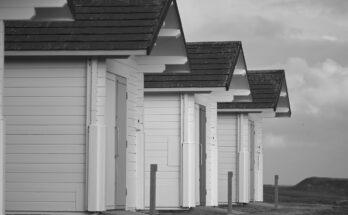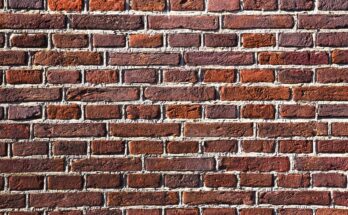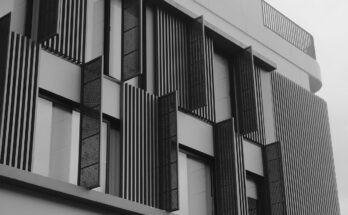ZonaJakarta – So, you finally did it—you joined the solar movement and had sleek, shiny panels installed on your roof. Whether you were motivated by cutting your electric bill, reducing your carbon footprint, or just wanting to look cool in your neighborhood, going solar is a smart move.
But now that the panels are up and soaking in the sun, you might be wondering: What now? Do I just leave them there forever?
Not quite. While solar panels are famously low-maintenance, they’re not exactly “set it and forget it” systems. Just like any part of your home, a little attention here and there can keep them working efficiently and lasting longer.
Here’s the guide to understanding what solar roof maintenance actually looks like—and how to do it without needing a degree in electrical engineering.
First, the Good News: Solar Panels Are Built Tough
Before you panic about needing to climb up there every weekend, take a deep breath. Solar panels are designed to withstand years of weather—rain, wind, snow, and even hail in some cases. Most come with warranties that last 20 to 25 years or more. So yes, they’re durable. But that doesn’t mean you can totally ignore them.
Even small issues—like a layer of dust, some nesting birds, or loose wires—can quietly mess with your system’s performance over time.
Keep an Eye on Dirt, Dust, and Debris
Think of your solar panels like your phone’s screen: the cleaner it is, the better it works. Over time, grime can build up from dust, pollen, bird droppings, or nearby trees. While rain can wash off some of it, it won’t always do the job completely—especially in dry or dusty areas.
A quick rinse with a hose every few months can help keep things clear. For stubborn gunk, a gentle scrub with a soft brush and soapy water does the trick. Just don’t use anything abrasive, and never step directly on the panels.
And yes, if you’re not keen on climbing ladders, you can always call in a solar cleaning service to handle it safely.
Watch for Shade That Wasn’t There Before
When you first installed your system, the area probably had good sunlight exposure. But trees grow, new buildings go up, and over time, panels that were once sun-soaked might end up in partial shade.
If your energy production seems lower than usual, it might not be your panels—it could be your trees throwing shade (literally). Trim back branches or call an arborist to help clear the path for more sunlight.
Monitor System Performance
Most modern solar systems come with an app or online dashboard that lets you track how much energy your panels are producing. This is your first line of defense. If the numbers start dipping for no obvious reason, it’s a sign something needs attention.
Could be dirt. Could be a loose cable. Could even be a damaged inverter. Either way, catching it early can save you a drop in efficiency and avoid a more expensive fix down the line.
Inspect the Roof, Not Just the Panels
Remember: your solar panels are mounted on your roof—not part of it. That means the condition of the roof still matters. Every once in a while, check for missing shingles, sagging areas, or water damage around the mounts and racking system.
If water starts to leak through or the roof structure weakens, it could affect the safety of the entire solar setup. If you’re unsure, schedule a yearly roof inspection along with your regular home maintenance checks.
Check the Inverter—That Little Box Is a Big Deal
The inverter is the brain of your solar system—it converts the sun’s energy into electricity your home can use. If it goes out, your panels can still collect sunlight, but none of it will power your home.
Inverters usually have indicator lights that show if everything is running smoothly. Green means good, red or flashing means call a technician. Keep an eye out for warning signs, strange noises, or error messages.
Animals and Wiring—Yes, It’s a Thing
It’s rare, but small critters like squirrels and birds sometimes find solar panels a cozy place to build nests or chew on wires. This can damage your system and pose a fire risk if left unchecked.
If you hear scratching sounds on your roof or see debris piling up around the edges of the panels, it’s time for a professional checkup. You can also install critter guards to prevent unwanted visitors from getting too comfy up there.
Call in the Pros Once a Year
Even if you’re doing everything right, it’s still a good idea to have your solar system professionally inspected once a year. Technicians can check for hidden issues, test performance, and clean the panels thoroughly.
It’s a small investment that helps keep your system running at peak efficiency—and protects the bigger investment you made when you installed it.
Final Thought: Don’t Let Maintenance Scare You
Yes, your solar roof needs care—but it’s not nearly as complicated or demanding as it sounds. Most of the upkeep is visual, simple, and occasional. Think of it like owning a car: a little maintenance here and there, and it’ll serve you for years.
Your solar panels are working hard every day to save you money and reduce your carbon footprint. The least you can do is give them a quick check-up now and then.
So, grab your sunglasses, glance up at those beautiful panels, and rest easy knowing that a bit of attention now will keep the sunshine powering your home for decades to come. (*)




